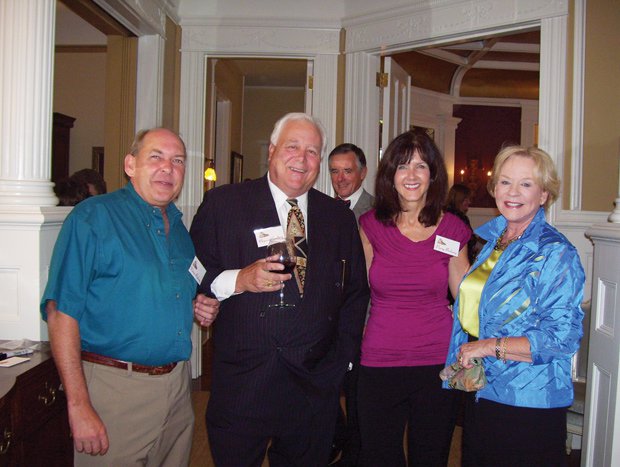A visit with John Jessiman, the eminent ceramic arts teacher, artist and founder of Cub Creek Foundation

Out Of The Fire
John Jessiman creating a piece of pottery in a Cub Creek workshop.

John Jessiman’s home in Appomattox, which is also the home of the Cub Creek Foundation

A ceramic vase made at the Cub Creek Foundation

The wood that powers two of the Cub Creek Foundation kilns

John Jessiman at work

Ceramic sculptures inside one of the kilns

Ceramic sculptures inside one of the kilns

Ceramic sculptures inside one of the kilns

A Cub Creek Foundation resident

Cub Creek Foundation tools

Workshop at the Cub Creek Foundation

Cub Creek Foundation residents, with John Jessiman third from left

Smoke rising from the chimney

Cermamic workshop in session
A genial and expansive man with a walrus moustache and wire-rimmed glasses, John Jessiman is the visionary behind the Cub Creek Foundation, a center for the advancement of the ceramic arts. On this October day his house is fragrant with delicious cooking smells. He’s hard at work preparing a Mario Batali-worthy feast (squid with white beans, polenta with meatballs, sweet and sour butternut squash) to feed the participants in a Cub Creek two-day workshop with internationally known ceramic artist Chris Staley.
A distinguished ceramics professor for 33 years at the State University of New York, Jessiman was casting about for a place to retire. Fed up with the brutal winters of upstate New York, he took a cue from The Odyssey, throwing, not an oar in the back of his pick-up, but a snow shovel, and driving south until someone asked him what it was. He landed just outside of Appomattox, and purchased the antebellum tobacco plantation “Grassydales” on 100 unspoiled acres in 1998. It would become not just his home but also the home of the Cub Creek Foundation.
Sadly, just eight years later the house burned to the ground with everything Jessiman owned including a substantial collection of artwork and ceramics amassed over the course of several decades. Undeterred, he’s been constructing a replacement (now nearly complete) almost singlehandedly. It’s a handsome barn-like structure topped with a cheery red standing-seam roof.
In addition to its schedule of visiting artist workshops, Cub Creek also provides on-site critiques, and Jessiman organizes traveling ceramic exhibitions. But the core focus of Cub Creek is its residency program, which attracts ceramic artists working in both functional and sculptural traditions from around the world. A committed teacher and firm believer in the benefit of a concentrated art experience in a communal environment, Jessiman started the residency program in 2002 specifically to help talented emerging ceramic artists from liberal arts backgrounds prepare for graduate school—in other words, students who, given the academic demands placed on them, hadn’t been able to immerse themselves in their medium to the same degree as students at art schools. During a year at Cub Creek, they can build up their portfolios and thus make themselves more competitive Master of Fine Arts program candidates. Applicants are selected based on work submitted and letters of reference. Jessiman is clear that he wants residents to have a strong work ethic.
Jessiman draws no salary, and in the same spirit of generosity he expects the residents to organize some type of community outreach effort during their stay. There are six residents who pay $475 per month for their room, studio space and Jessiman’s guidance in the form of technical support and critiques. Food and materials (they pay wholesale prices for the latter) are additional. The monthly charge covers two-thirds of the actual cost, the rest is picked up by the foundation. Residents are housed in a newly constructed facility—basic but pleasant. Cub Creek’s main studio is in a separate, open-plan building, a short walk from the residence, where each artist is allotted approximately 400 square feet.
Cub Creek has four large brick kilns. Two are fired by wood, two by gas. Operating the wood kilns is a massive undertaking; it takes five days from candle (heating up the kiln) to finished firing and requires four to five cords of wood—all chopped by residents. During this time the heat inside will reach 2,350 degrees. One wood kiln is a designated salt kiln. Salt is introduced to the kiln through a small side door toward the end of the firing. The calcium chloride causes a reaction with the clay producing a lustrous surface. Wood kilns also allow for the other more serendipitous effects of ash and flame that leave their marks on the pottery during firing. Of the two gas kilns, one is for glaze firing and the other is a second salt kiln, which produces a surface that has a stronger salt buildup without any ash deposits.
But as Jessiman points out, equipment will only take you so far. “Significant work must always come from a synthesis of strong ideas that are connected with a deep understanding of the artist’s time and place. Along with a mastery of technique, the work must relate to the artist’s culture and ultimately matters little as to how it was made or fired. Dan Rhodes [the late ceramic artist] once said he did not care if a piece was carved out with a spoon. The challenge for all artists is in finding those connections and procedures that will give work meaning.”
Steven Glass, the Resident Potter at the Virginia Museum of Fine Arts, says this of Cub Creek and its founder: “I have watched its birth, immolation and rise from the ashes. John is a treasure, a real force of nature—a great artist, wonderful teacher and an excellent chef.” My visit certainly confirmed that assessment. At Jessiman’s house in the hours before a festive kickoff party for the workshop weekend, the doors are flung open to the beautiful afternoon and rockin’ country music blares from the CD player; excitement is in the air. One can see right away why residents at Cub Creek must have a remarkable experience.








